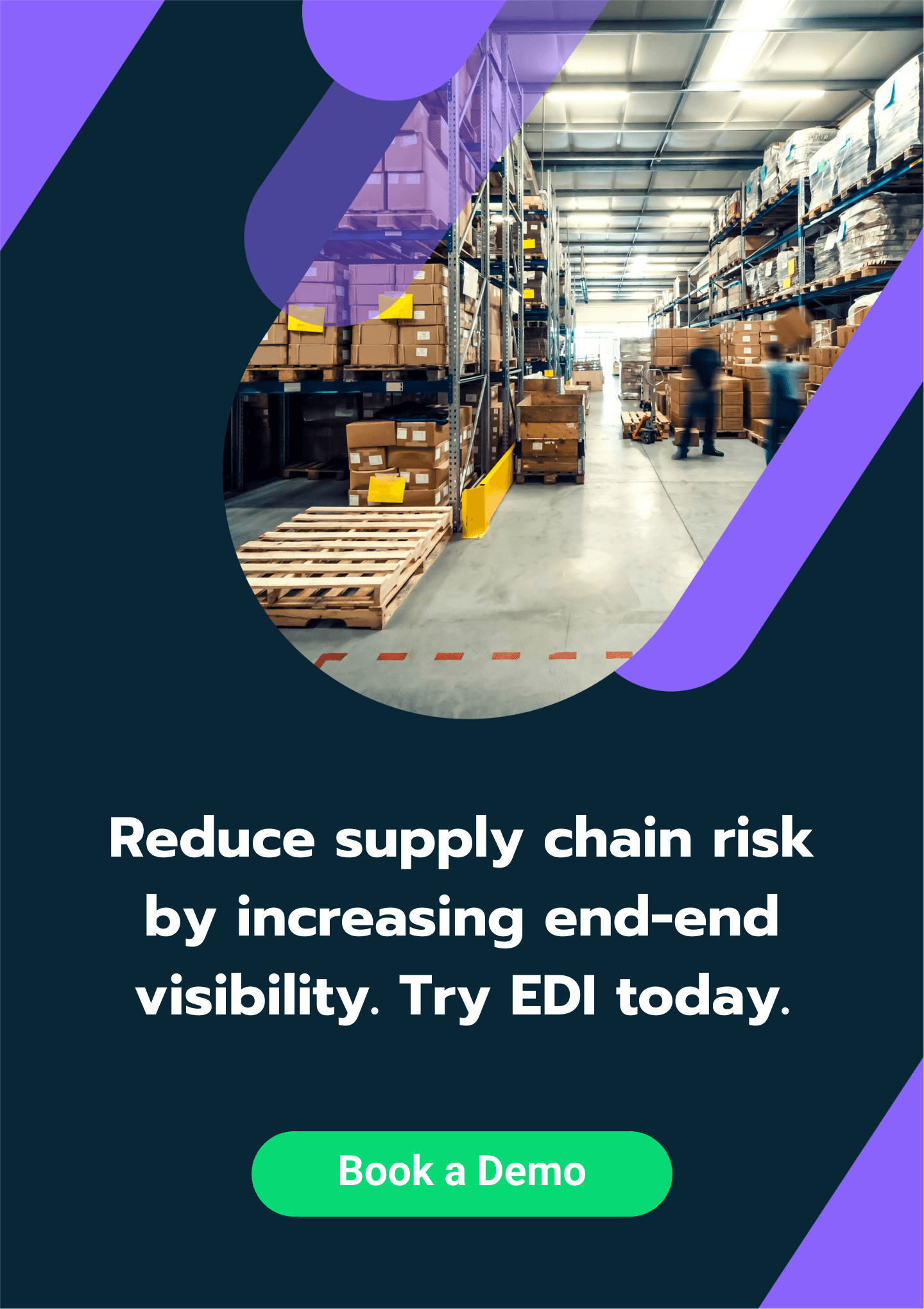Agile Supplier Onboarding: Supply Chain Security in Uncertain Times
Over the past year, COVID19 has shifted how many manufactures have operated. The unstable situation has meant that some supply chains have broken down, others have had to diversify their offering and supplier base. In some cases, companies have had to change what they produce, to meet the significant demand for products and equipment identified as key in fighting the spread of the coronavirus – COVID-19.
‘By YE24, following the COVID-19 pandemic, more than 30% of manufacturers will have changed their business models, compared with just 10% before the crisis.’ Gartner – Predicts 2020: Resilience in Industrie 4.0 for Advanced Manufacturing Builds on Data and Collaboration Models
As a result of these changes, the work to maintain a stable supply chain in an unstable world has put pressure on many organization’s supply chains. Leaving many to think about how they can improve their supply chain management as they identify gaps in their current set up that causes added stress and pain. EDI is a critical tool that brings visibility, stability, and optimization to supply chains by digitally automating the transfer of documents. But only if done right.
Our mission now is to show how sudden and unforeseen changes can impact the supply chain, in particular, the onboarding process of new suppliers, and how the success of both is critical to weathering uncertain storms.
Efficient responsiveness in production
Some businesses found themselves in the midst of the COVID-19 pandemic trying to pivot and change their manufacturing quickly in order to sustain their operations.
For example, Photocentric – a manufacturer of large-format 3D printing, won a contract from the NHS to switch its production to make 7.6 million protective face shields in 6 months.
Another example of a company that had to meet changing demands was Dyson. Together with Airbus, Rolls-Royce and Ford were part of a consortium called Ventilator Challenge UK. Having to switch design and manufacturing in a short space of time to support the crucial work to provide 30,000 ventilators for the NHS to treat COVID-19 patients. However, when Dyson changed production, it was exposed to several supply chain disruptors from the outset. Including the lack of components on the market, many manufacturers started to produce ventilators. Therefore, the company initially delivered only 30 units. As more component suppliers were onboarded, the supply chain improved significantly. This finally resulted in the production of thousands of pieces at the same time.
Uncertain times – Impact on supply chain & supplier onboarding?
- The supplier base is changing & demand is high/little time – onboarding new suppliers to the EDI system needs to be a quick process
- Onboarding EDI tool needs to be easy to use & train suppliers (self-service) – not to disrupt or slowdown
- EDI tool to scale and flex with the business needs during this time
- EDI tool for different capabilities and sizes of suppliers – (different levels of EDI knowledge possibly due to sourcing new suppliers)
- Crucial to meeting new demands of business and supporting the success of business in challenging times
- Can provide visibility of supply chain in a critical period of new production and supplier relationships
The most significant value in the cases highlighted above was time, or more accurately the lack of it. In a situation where production required adjusting, many of these companies were struggling with a huge demand that had to be met in a short period of time. Therefore, systems and tools supporting the smooth running of the supply chain, like EDI, must facilitate quick processes and increased visibility that supports business management and decision making whilst not interfering with coexisting operations. EDI must be adapted to different types of companies. Each of them is managed in a different way and the level of knowledge about EDI in them is also non-identical.
So how can an EDI solution help in managing your supply chain in uncertain times? In the beginning, we should start with what EDI really is. Briefly, it enables the electronic transfer of business information between trading partners (B2B) through a standardized format. This highly efficient process is entirely paperless and requires no human participation, saving businesses countless pounds through the elimination of repetitive cost, labor, and time-intensive tasks such as purchasing, printing, processing, and delivery of paper documents. EDI is used in supply chain management to facilitate the transfer of a wide range of documents such as bills of lading, customs documents, inventory documents, shipping status documents, and payment information documents.
Here are some of the most common documents that EDI facilitates in the supply chain:

There is a couple of crucial benefits of EDI for Supply Chain Management. One of the most important is the instant exchange of documents which means real-time transactions. Also, it is cost and time saving for business because It does not need any human intervention. All these EDI benefits result in a smooth operation of the supply chain and faster growth of the business.
Fact: In the B2B universe, slow, paper-driven processes result in much higher costs and additional time required for trading partners to conduct their business. Typical repetitive tasks that apply to the processing of paper documents such as printing, copying, delivering, filing, storage, and postage, to name a few, are eliminated when you upgrade to an EDI solution, which combines to yield tremendous savings in time and money. Therefore, choosing the right EDI provider is crucial.
What is B2B Partner Onboarding?
Trading partner onboarding is a set of complex processes used to connect to business partners such as customers, carriers, and/or suppliers. B2B partner onboarding refers to things like the configuration of a partner’s EDI profile and/or building out the necessary maps to send and receive data. The goal when onboarding any new B2B Partner is to connect to that partner quickly and accurately. Trading partner onboarding has always been a challenge for many companies, especially those companies looking to connect with 1000s of new suppliers as part of a new manufacturing project for example. But whether it is the pandemic, an earthquake or simply trying to get a product to market ahead of the competition, companies need a faster way to onboard new trading partners when the need arises.
Onboarding Trade Partner Process:

Suggested reading: Access new trading partners quickly for COVID-19 support.
Uncertain Times – Automotive Supply Chain Impact
When Covid-19 began to spread in China at the end of 2019, affecting an increasing percentage of the manufacturing sector. This directly hit the local auto market where most factories had to close. However, with more than 80% of the world’s automotive supply chain connected to China, these closures started to cause production shortfalls for global original equipment manufacturers (OEMs). As the virus spread to Europe and the Americas, a raft of temporary closures was announced from around the 16th of March. Several months later – after a period of significantly reduced production – most of these plants have only just started to re-open.
We are now beginning to see the true impact of these temporary shutdowns on market performance metrics. As an example, the Society for Motor Manufacturers and Traders (SMMT) recently released data for April – a full month of lockdown – showing a 99.7% decline versus the same month the prior year.
“The impact of COVID-19 on the automotive supply chain has been unprecedented. The European Automobile Manufacturers Association (ACEA) estimated EU-wide vehicle production losses to be at least 2.4m units on the 1 June 2020, due to COVID-19 factory shutdowns. This accounts for about 12.5% of usual annual production volumes in theregion”– KPMG – Covid and the Future of the Automotive supply chain.
Solution
Governments are trying at all costs to raise the economy and, as in the case of the automotive market, where remote work is not possible, an adaptation of jobs is required. It is, of course, about creating safe working conditions for employees. When suppliers manage to adapt to the new working conditions and production again reaches the break-even point, product deliveries will return to normal.
It should be noted that the automotive market is very extensive and the production of not only cars but also other vehicles require a huge demand for various parts. For example, building one car consists of over 30,000 parts, including a single bolt. Of course, the problem of producing a single small part will not have a huge impact on the supply chain and overall car construction, but a larger amount may cause the OEM to stop production or even temporarily remove the product from sale.
There are several ways to continue production processes despite encountering problems with the availability of some components. An online car configurator is very useful in this case. More precisely, finishing such as paint, upholstery, rim type, or even the appropriate type of engine. Thanks to this, the production and sales process is easier because we have immediate information about the availability of components needed to build the car.
Supplier Onboarding Challenges
Trading Partner Onboarding is an important growth lever in business. When done quickly, it enables business users to easily collaborate with their trading partners or customers to drive the business forward. On the other side, those who don’t have a robust trading partner onboarding regime in place fail to grow at the speed of business. To summarize, organizations must quickly add new trade partners and suppliers to their existing ecosystem for realizing remarkable growth outcomes.
For a long time, organizations have relied on legacy systems to onboard trading partners. But, these systems make the process complex, time-consuming, and not reliable. These systems are not able to support secure communication protocols (AS2, OFTP2, SFTP, and more) as well as the EDI and non-EDI formats that the trading partners use. In this situation, companies cannot support new partner requirements and newer trading partner integrations with SaaS applications, such as Salesforce and NetSuite. Since old-styled solutions cannot reliably communicate with their customers and partners, risks of companies violating SLAs. Additionally, conventional trading partner management solutions need IT to build custom code that slows their ability to connect with those trading partners and effectively conduct business.
When IT teams have to self-custom-code, configure, test, and manoeuvre new integrations for every additional trading partner connection, the time required to deliver value lengthens, which, in turn, damages business relationships, pushing out ROI and ultimately making companies difficult to business with.
How can Data Interchange help with challenges?
We are at the beginning of 2021 and many manufacturers are still struggling to run their businesses due to delays in the supply chain and ineffective sourcing of business partners. We believe that this is the best time to make these processes effective, but you will need a modern and proven EDI system. A system that will create a flow of information that enables you and your supply chain partners to better collaborate and improve outcomes. Ultimately, EDI is all about simplifying your supply chain management.
Let us make it even easier. The overwhelming majority of modern businesses will require a flexible approach to EDI. And because it is customisable, EDI-as-a-Service is inherently more flexible than traditional forms of EDI. EDI-as-a-Service empowers businesses to achieve flexibility while maintaining supply chain simplicity and overcoming rollout challenges.
As a professional EDI service provider, we can make it easy, by adapting the product to the customer’s requirements, additionally minimizing the cost of production downtime and the supply chain. A user-friendly B2B integration solution is easy to deploy and provides a user-friendly platform for defining the integrations, creating the business transformation logic, and a broad range of connectivity options. It also ascertains faster partner onboarding which is the key for any successful B2B Integration project. Start your EDI journey and plan your future with Data Interchange today.

































































































































